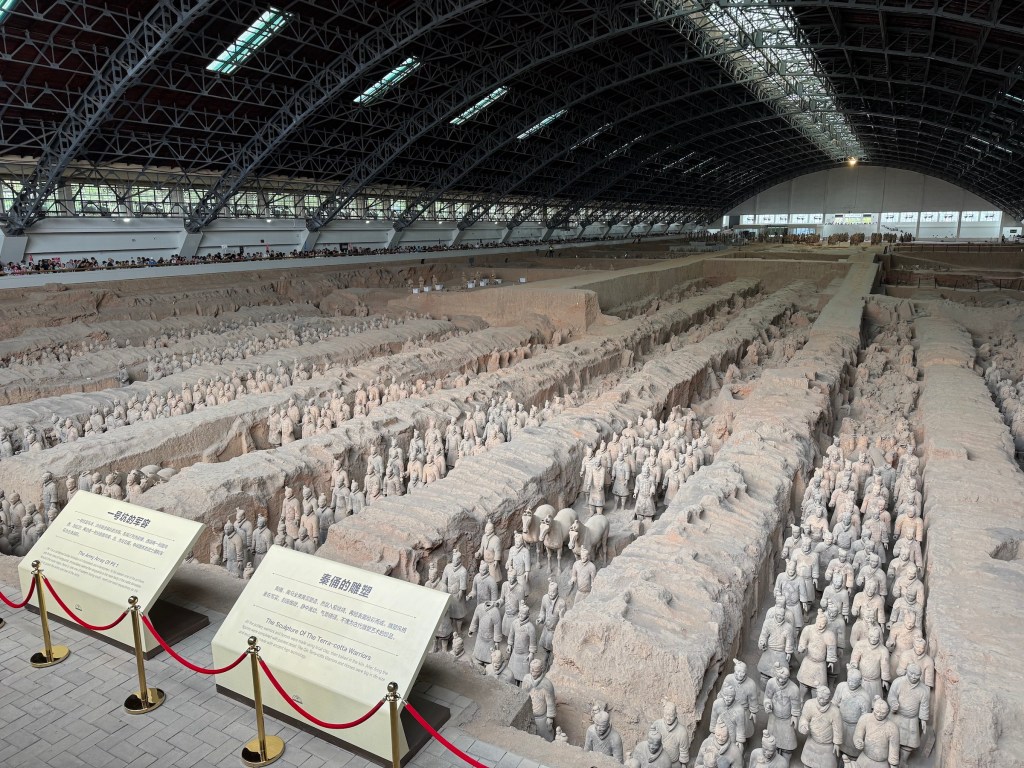Man Smashes Ancient Terracotta Warriors in China


A tourist forced his way into the third-century BCE “Terracotta Army,” a group of thousands of ancient sculptures of soldiers in Shaanxi province in China, resulting in damage to some of the works, according to the Agence France-Press (AFP).
The famous sculptures are housed in Emperor Qin Shi Huang’s Mausoleum Site Museum. Upon his 18-foot descent into the display last Friday, May 31, the man — identified by Chinese authorities as a 30-year-old domestic tourist — reportedly damaged two life-sized terracotta soldiers at the UNESCO World Heritage Site. The clay figures are part of an iconic burial tomb and national treasure constructed to honor the first emperor to unify China, who was also the first member of the short-lived Qin dynasty.
In a video circulated by multiple media outlets, the man is shown lying nonchalantly against one of the ancient statues displayed at the Emperor Qin Shi Huang’s burial site museum in the city of Xi’an. While the man reclines in the archaeological pit, a crowd of spectators gathers along the perimeter to peer down. At least one toppled statue can be seen next to the tourist.
The tomb site for China’s first “absolute monarch” encompasses 200 subterranean pits containing thousands of terra cotta soldiers and horses produced by workers in the Empire’s provinces before Qin Shi Huang’s death in 210 BCE.
Chinese officials, according to the AFP, said the individual “climbed over the guardrail and the protective net and jumped” and damaged the two artifacts to varying degrees.” The officials attributed the tourist’s motives for entering the display to a history of mental illness, and the incident is being investigated. The mausoleum is protected under state law.
Hyperallergic has contacted the Emperor Qin Shi Huang Mausoleum Site Museum and UNESCO for comment on the alleged incident.

UNESCO named the Mausoleum of the First Qin Emperor a World Heritage Site in 1987 for the clay sculptural group’s “exceptional technical and artistic qualities.” The model army, according to UNESCO, is also representative of the military organization of one of the shortest-reigning Chinese dynasties.






